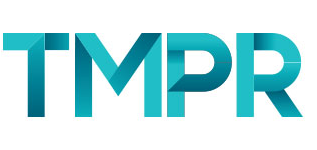Reduce unsubscribers with preference centre power
Picture this: it’s Monday morning, you check your emails with trepidation. Suddenly, you are hit with an overwhelming tide of digital correspondence.
You put up a mean fight, sorting the influx into various subfolders, a red flag here and a delete there, in your hunt to find those crucial pieces of information amongst the slurry.
It’s 9:05am, and your tired little brain already needs a break. You cry out to the Outlook Gods, “There must be an easier way!”
Well, there is: UNSUBSCRIBE!
Simple, no?
The unsubscribe button oft gets neglected in favour of move-to-trash (or willful ignorance, for those hoarders amongst us), which does nothing to curb the bloat of our inboxes with unnecessary content. But trust us when we say there is something so satisfying in that little act of rebellion: hitting the “opt out” button.
Minimalism: fashion statement, or state of mind?
When militant cleaning – Marie-Kondo-style – swept the world in 2017, we experienced a collective eye-opening to the clutter in which we allow ourselves to be surrounded. But clutter doesn’t stop at the physical world.
Our digital space is just as important to keep clean for peace of mind, and ease of thought. You wouldn’t believe how much head space gets freed up when faced with a decluttered inbox, allowing you to focus on the important stuff.
But don’t just take our word for it: a recent study found that 60% of Brits feel less stressed after decluttering their devices, 69% feel more productive, and 71% feel more organized.
The best defence is a good preference (centre)
“But wait”, I hear you say, “Why is TMPR espousing digital minimalism? They handle my e-marketing!” Yes, if you’re reading this there’s a good chance you are one of our clients who rely on email marketing as a major source of revenue (and no, we haven’t been taken over by a rogue gang of Zen Buddhists). We’re here to tell you there’s a way to avoid the unsubscribe: a solid preference centre is worth it’s bytes in gold!
Any good marketer knows there is no one-size-fits-all when it comes to what an audience will respond to, so why would emailed content be any different? Preference centres put the consumer in the driver’s seat, giving a feeling of control, and allowing your subscribers to decide on the content that is meaningful to them.
Allowing subscribers to tailor what they see, and how often they see it, helps mitigate unsubscribe rates. It also gives you valuable insight into what your customers really want.
In keeping with the hyper-personalised world that digital media and marketing has become, tailored content can be super useful if funnel marketing is your bag. And as data privacy laws are tightening for third-party collectors, Preference Centres provide a direct source for first-party data.
An engaged, interested reader is far more likely to share your content, widening your audience in a way that is far more valuable than “delivered” numbers on a stats report. So, while an email a day may not be able to keep Dr Unsubscribe away, stop worrying and embrace the power of the preference centre.

